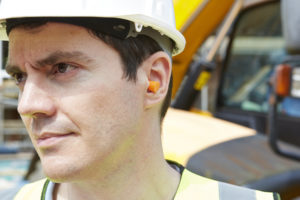Young construction workers are less likely to wear hearing protection at work compared with other age groups — WorkSafeBC explores reasons why.

Photo credit: iStock.com/Highwaystarz-Photography
Twenty-four percent of young workers in construction do not use hearing protection. They’re also less likely to wear hearing protection compared to young workers in other industries.
This information is based on data from more than 160,000 hearing tests conducted in B.C. in 2016.
B.C.’s Occupational Health and Safety Regulation requires annual hearing tests for workers who are “exposed to hazardous noise to prevent noise-induced hearing loss and permanent hearing damage.” You can read more about this in WorkSafeBC’s Sound Advice: a Guide to Hearing Loss Prevention Programs.
Now that WorkSafeBC audiologists have identified the problem, their next step is to find out why.
“If people choose not to wear hearing protection, there’s a reason. It’s not right, but we’ve got to understand why,” says Sasha Brown, WorkSafeBC occupational audiologist.
Young workers may not recognize the risk
One reason may be that young workers (in the 15-to-24 age range) may not realize their hearing is at risk. That’s because most sound levels in the construction industry are not as extreme as they are in oil and gas, or in forestry. (I wrote about those industries in my posts Looking at hearing loss in oil and gas and More forestry workers not getting annual hearing tests.)
“In other industries, it’s very obviously loud and might almost be physically painful to the ears. But in construction we’re often talking about sound levels that are above the hazardous range but don’t make you wince,” Sasha says. She adds that construction noise is often in the 90- to 92-decibel range.
WorkSafeBC defines hazardous noise levels as 85 decibels and up for eight hours, or the equivalent. For perspective, consider that heavy traffic at close range is around 85 decibels.
Changing workplaces means less organization
Another reason young workers aren’t wearing hearing protection may be that their workplaces change fairly often and are perhaps less organized than workplaces in other industries.
“In construction, it can be different every day. You’re on different sites with different people, so it can be a bit less organized, especially on residential sites,” Sasha says. “Employers might just supply a box of ear plugs — all the same size — and feel that they’re meeting their responsibility. But ear plugs are not one size fits all: if someone takes an ear plug that’s too big and tries to fit it in, that’s not going to be comfortable and they’re probably not going to wear it.”
WorkSafeBC is continuing to reach out to employers and workers to remind them why it’s necessary to have a variety of hearing protection sizes and styles to protect their hearing.
“Our spoken language and our ability to communicate is so critical, and one of the first things to go is being able to hear over background noise, like in restaurants and pubs,” Sasha says. “They miss out on connections with other people.”
Read my post How to make people wear safety gear for more tips.


